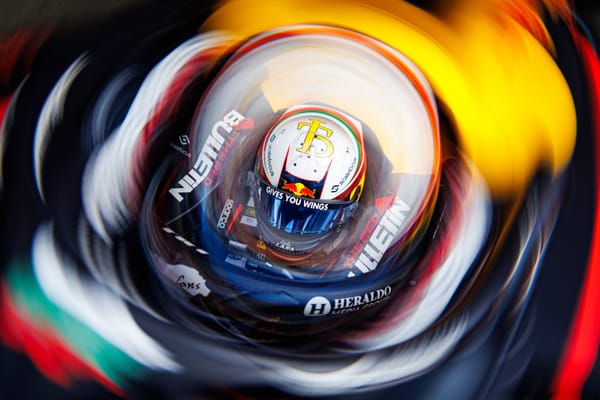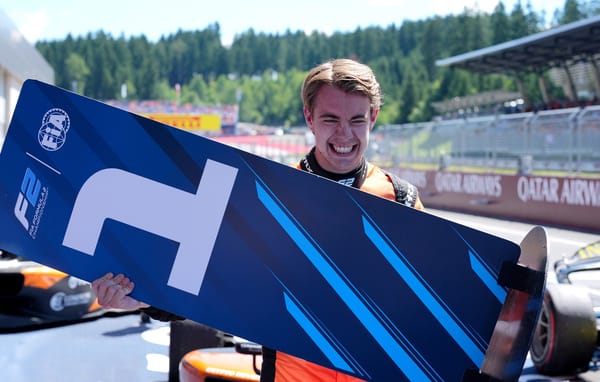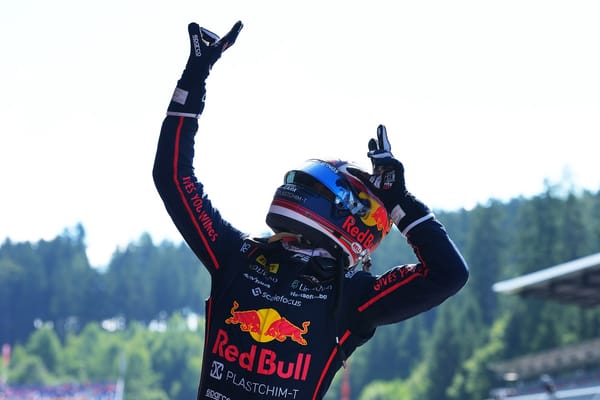What happens during a red flag in F1: Australian Grand Prix ending explained

The 2023 Australian Grand Prix made history and finished under controversy with a record number of red flags and race stoppages.

The third restart of the Australian Grand Prix ends in chaos at turn one. (XPB Images)
Three red flags were deployed during the race, as well as multiple safety cars, with Max Verstappen taking victory ahead of Lewis Hamilton and Fernando Alonso.
The first red flag was deployed when Alex Albon crashed on lap seven and the red flag came out on lap eight due to the gravel on track. The second came out when Kevin Magnussen crashed on lap 54 at the exit of turn two, with the red flag on lap 55 due to the debris on track. The third was on 57 when the restart from the previous red flag ended in carnage throughout the first half of the lap.

Alex Albon exits his stranded Williams in the early stages of the Australian Grand Prix. (XPB Images)
Plus, although it may not count in the history books, a fourth was shown once the race had completed with fans entering the track and Nico Hulkenberg stopped at turn two.
What is a red flag? What happens to the race?
A red flag means the race will be suspended due to an incident on track. Generally this means it is an incident or conditions that cannot be managed with a safety car or virtual safety car. According to the Formula 1 regulations, a race will be suspended "if competitors or officials are placed in immediate physical danger by cars running on the track." Red flags will be shown at all marshal points and the lights above the start line will flash.
Formula 1 race director Niels Wittich is in charge of the decision to bring out the safety car or red flag, while the Race Stewards from the Fédération Internationale de l'Automobile (FIA) act as referees and review track penalties and protests from the teams.
What are teams allowed to do during the red flag?
All cars will return to pit lane, where they may be worked on by the teams but only in a set number of ways. Teams can start the engine, add compressed gases, fit cooling or heating devices, make changes to the brake or radiator ducts, repair damage from any collisions or accidents, and adjust the front wing. Importantly, they can also change wheels or tyres, which gives drivers a "free pit stop" as they do not lose their position in the running order.
In the Australian Grand Prix, this "free pit stop" promoted Lewis Hamilton and Max Verstappen ahead of George Russell in the strategy battle. Russell had fallen down the order to complete his pit stop on lap seven behind the safety car. Both Hamilton and Verstappen were able to keep their positions at the lead of the race with a tyre change in the pit lane with the race red-flagged.

Debris rains on the Albert Park circuit after both Alpine F1 drivers collided at the third restart. (XPB Images)
What happens after a red flag? How does the race restart?
If the race conditions allow it, the race will be restarted by a standing start off the grid. They will follow the safety car around the circuit until the conditions for a standing start are confirmed, when the lead driver takes control and sets the pace on the way back to the grid. If the race conditions are not safe for a standing start, the field will follow the safety car around for a rolling start. The safety car pulls into pit lane and the leader is free to start the race under the green flag.
The first red flag restart in Melbourne behind Lewis Hamilton prompted a complaint from Max Verstappen that Hamilton had breached the restart procedure. When following the safety car, the lead driver has to stay within at least 10 car lengths of it. Hamilton was investigated but the FIA Stewards found he had followed the rules, as the lead driver is given control of the race once the standing restart is confirmed and the lights on the safety car go out.
The FIA Stewards have suggested this restart procedure may be changed as it caused issues further down the field. George Russell in second place was slow out of the pit lane, and sped up to catch up to Hamilton. This increased the speed of all of the cars except Hamilton, who had to slow down when they caught up to him. This caused an accordion effect at the rear of the field, with a number of cars having to take evasive action to avoid crashing. This was similar to the huge crash at the 2020 Tuscan Grand Prix at Mugello, when the rear of the field was caught up in a massive crash at a safety car restart due to a large speed differential.
What happens to the running order at a red flag?
According to the Formula 1 regulations, the order is taken at the last point at which it was possible to determine the position of all cars. The FIA has established that the field must complete the first timing sector for a new race order to be set. If a car is moved out of pit lane into the team garage during a red flag, that driver must return to pit lane and restart the race there.
This caused controversy at the final red flag, when the FIA Stewards took around half an hour to determine how to restart the race with just one lap remaining and with several drivers crashing out at the previous restart. This meant that drivers who crashed out lost their positions in the final standings, leading to a protest from the Haas F1 Team as Nico Hulkenberg would have finished the race in fourth place.
However, the FIA found that the precedent for chaos after a standing start was set in the 2022 British Grand Prix at Silverstone, with the race red flagged before the field could complete the first timing sector. That race was restarted based on the order at the previous restart, which is how the Stewards decided to restart and then finish in Melbourne.
How are laps counted under a red flag? How long can a red flag last?
Any time behind the safety car or red flag counts towards the total time of the race, which must be completed within three hours of the start time. Laps on the circuit behind the safety car count towards the lap total and the race time, which must be completed in less than a cumulative two hours of track time. This means that a red flag period over an hour long will start to eat into the available track time.
This was an issue in the Australian Grand Prix, as final red flag came out on lap 57 of 58. As the lap to the starting grid would count as lap 58, this meant that the race had to be finished as essentially a parade lap behind the safety car.
Why were there so many red flags in the Australian Grand Prix?
The FIA said that the first was due to the gravel on the track, the second due to the debris from Kevin Magnussen's car, and the third due to the chaos at turn one with multiple cars wrecked.
The controversial finish to the 2021 Abu Dhabi Grand Prix between Max Verstappen and Lewis Hamilton came about after the safety car period was abruptly ended, with many believing it was to allow the championship to be decided under racing conditions for better entertainment. Several other races ending finishing in the opposite conditions behind the safety car has led to feedback from teams that they would prefer races to be stopped in the final laps. This means that the number of red flags is set to increase, especially in the closing stages of a Formula 1 race.
This is down to two factors.
The first, to promote the sporting element, as teams and drivers would prefer races to be decided under green flag racing than to trundle around for an anticlimactic behind the safety car. The second, following Abu Dhabi 2021, to provide clarity regarding the regulations and restart procedures at the end of a race, so that no driver gains or loses an advantage due to their on-track strategy and inconsistent application of the regulations.
All of this combined may see the number of red flags increase as Formula 1 and the FIA gain substantial benefits from red flags being used instead of safety cars in the final stages of a race. Series promoter Formula 1 gains more green flag racing, and the FIA can avoid any future reputational crisis for inconsistent rules. Despite public comments from teams and drivers criticising race stoppages, it will give them more certainty and improve their relationships with the FIA as the official "referee" of Formula 1 over the long term.
Watch every session of the Formula One World Championship on Kayo Sports - Get your free trial now!





